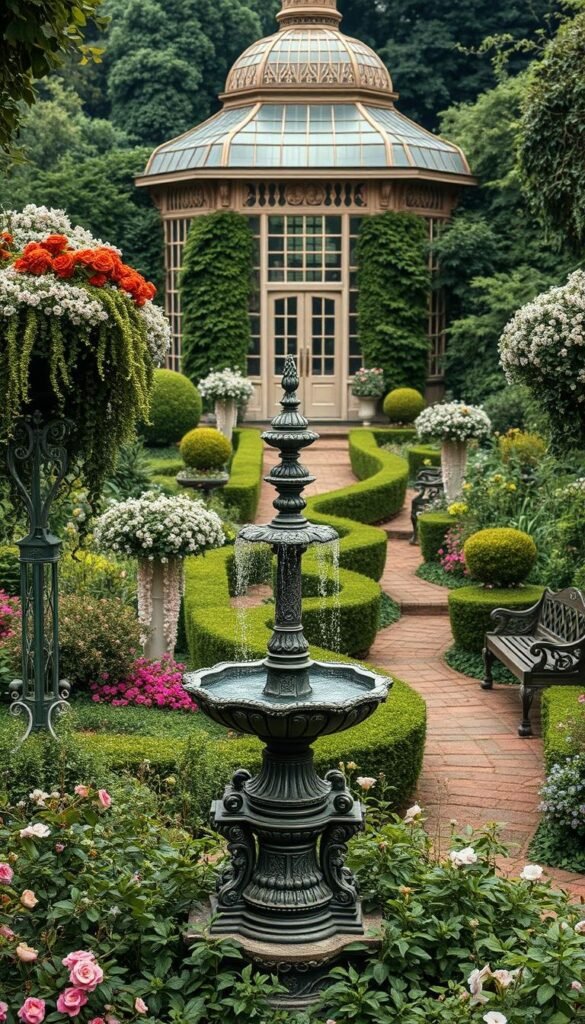Imagine stepping into a space where careful planning meets natural wonder. During the 19th century, outdoor spaces became living art forms, blending structured layouts with bursts of colorful plants. These creations weren’t just pretty—they showed off new discoveries from global explorations and clever greenhouse innovations.
What makes these spaces special? Think layered flower beds shaped like geometric patterns, paired with rare plants collected from distant lands. Water features served as focal points, while decorative ironwork added charm. It’s a style that feels grand yet welcoming, like a storybook setting you can actually use.
Today’s homeowners are rediscovering this approach, mixing old-world details with eco-friendly materials. You’ll see how strategic plant choices create year-round interest, from spring blossoms to autumn textures. Even small yards can capture that sense of discovery through winding paths or tucked-away seating areas.
Ready to bring this magic to your own space? Let’s explore how historical inspiration meets modern practicality, helping you craft an outdoor retreat that’s both functional and filled with character.
Embracing the Timeless Allure of Victorian Gardens
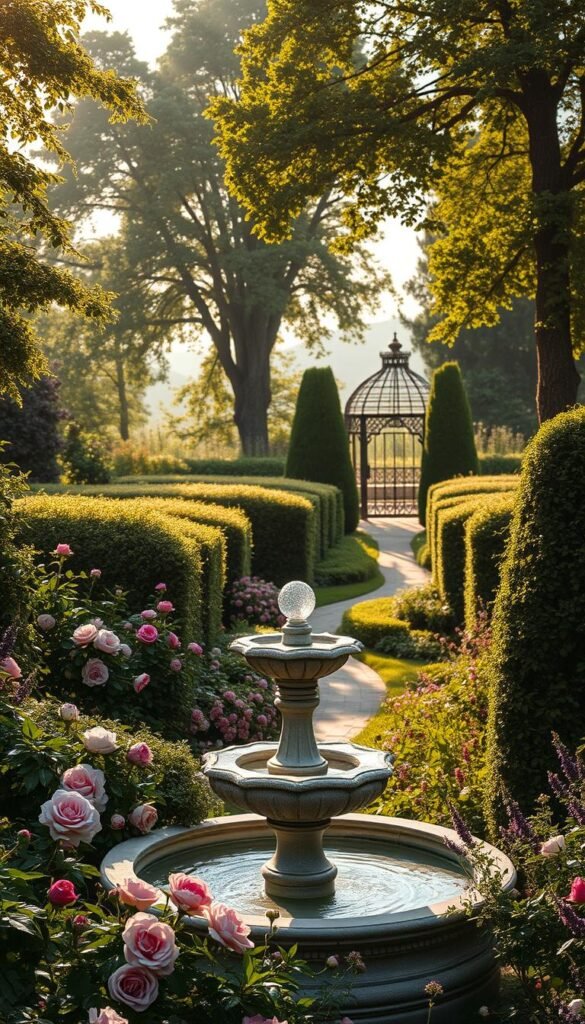
The 19th century transformed outdoor spaces into showcases of ingenuity. As railroads and steamships connected continents, plant hunters brought botanical treasures to Europe. This era blended strict geometry with wild curiosity, creating landscapes that balanced human control and nature’s spontaneity.
Historical Roots Shaping Modern Spaces
Industrial advancements made glasshouses and exotic species accessible to homeowners. You’ll notice how symmetrical layouts mirrored societal values—order, progress, and mastery over nature. Curved pathways often led to specimen trees or rare flowers, turning walks into educational journeys.
These spaces weren’t just pretty. They declared one’s worldly knowledge through plants from Asia or South America. Think of them as living museums where every fern and rose had a story.
Classic Meets Current
Today’s reinterpretations keep the spirit of those designs without the rigidity. Swap traditional boxwood for drought-resistant shrubs in geometric beds. Use reclaimed bricks for borders instead of expensive stone. The key? Honor balance while choosing low-maintenance options.
Your space can echo that sense of discovery with winding gravel paths or a central fountain made from recycled materials. Layer textures like feathery grasses beside structured evergreens to blend old-world charm with modern ease.
Romantic Foliage for a Lush Outdoor Retreat
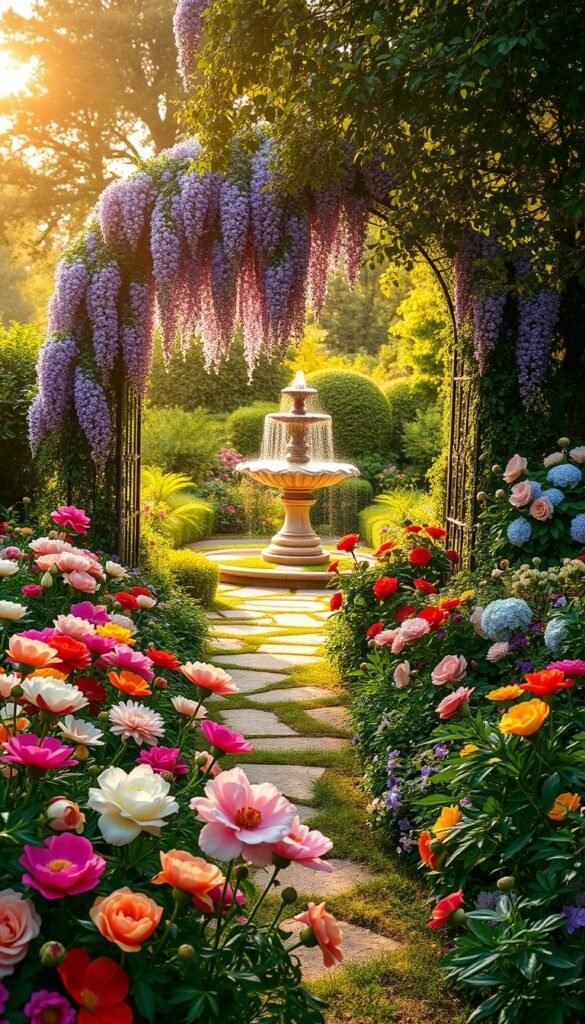
Transform your outdoor area into a sensory sanctuary by embracing the art of layered plantings. Start with heirloom roses like ‘Madame Hardy’—their cabbage-like blooms and citrusy fragrance add timeless elegance. Pair them with feathery ferns or hydrangeas for contrasting textures that invite touch and admiration.
Selecting the Perfect Blooms and Greenery
Choose plants that work overtime. Peonies offer spring drama, while lilies extend summer color into fall. For fragrance, try climbing ‘Souvenir de la Malmaison’ roses near seating areas. Pro tip: Mix pelargoniums in decorative pots for movable pops of scarlet or pink—a Victorian trick for elevating your space without permanent changes.
Designing Vibrant Flower Beds
Create depth by stacking plants in three tiers. Tall delphiniums form a blue-purple backdrop, mid-height peonies add volume, and creeping thyme spills over edges. Repeat this formula in curved beds to guide the eye naturally. For year-round interest, tuck evergreen shrubs between seasonal stars.
Remember: Overflowing abundance defines this style. Let annuals like geraniums fill gaps between perennials, and allow vines to soften stone walls. Your flower beds should feel generously planted—like nature herself arranged them.
Showcasing Ornate Fountains as Eye-Catching Focal Points
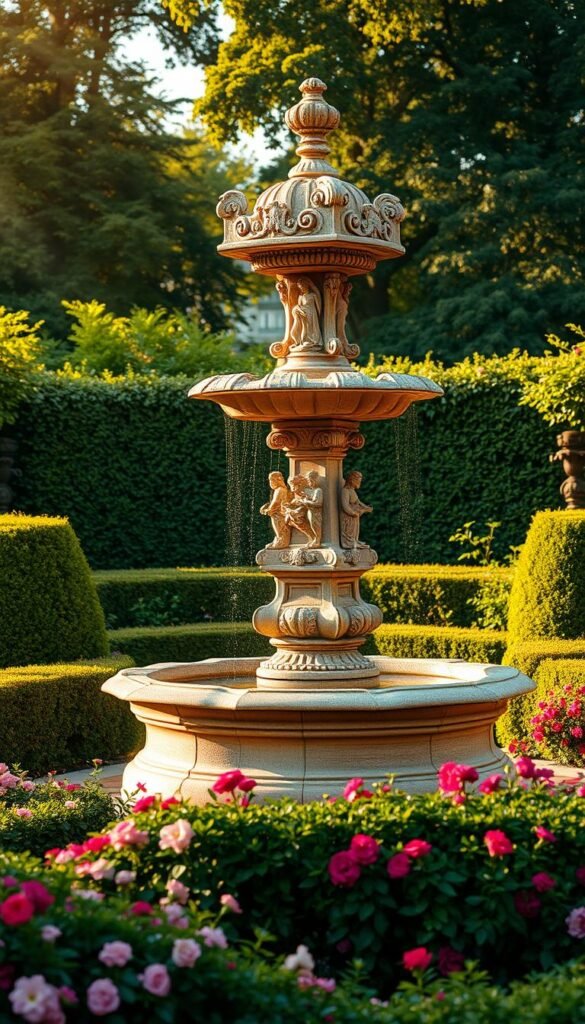
Water’s mesmerizing dance transforms ordinary spaces into living art. Historic designers mastered this by positioning fountains where light and sound amplify their impact. These features aren’t just decorative—they create microclimates for plants and offer cooling relief on warm days.
Integrating Sculptural Water Features
Choose a centerpiece that matches your space’s scale. A three-tier stone fountain works in sprawling yards, while wall-mounted spouts suit cozy patios. Surround basins with moisture-loving plants like Japanese irises or cardinal flowers. Their vibrant blooms contrast beautifully with stone or metal textures.
Modern recasts of classic designs blend seamlessly with traditional layouts. For example, copper fountains develop a natural patina over time, adding character without effort. Pair them with curved benches to encourage lingering moments of relaxation.
Balancing Function with Aesthetics
Strategic placement ensures your fountain serves multiple roles. Position it near seating areas to mask street noise or use it to divide garden zones. The sound of flowing water naturally guides visitors through your space, creating intuitive pathways.
| Type | Materials | Key Benefits |
|---|---|---|
| Tiered | Limestone, Cast Iron | Dramatic height, light reflection |
| Basin | Ceramic, Recycled Glass | Compact size, bird attraction |
| Wall-Mounted | Copper, Stainless Steel | Space-saving, modern twist |
For smaller yards, consider a bubbling urn tucked among ferns. Its gentle murmur provides ambiance without overwhelming the scene. Remember: every water element should feel intentional, like punctuation in a well-crafted sentence.
Vintage Touches: From Wrought Iron to Delicate Accents
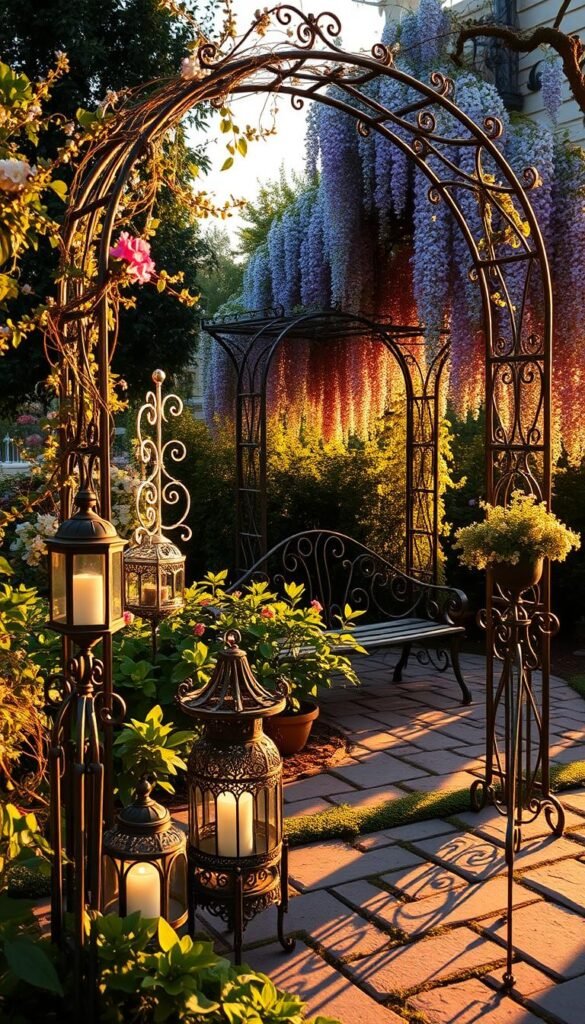
Every detail tells a story in a space shaped by historical craftsmanship. Decorative wrought iron elements and weathered stonework transform ordinary corners into conversation starters. These accents create rhythm and purpose, guiding visitors through layered visual narratives.
Choosing Authentic Accessories
Start with wrought iron furniture featuring scrollwork or floral motifs. A filigree bench becomes both seating and sculpture, casting intricate shadows as sunlight shifts. Pair it with stone urns overflowing with trailing ivy or seasonal blooms for contrasting textures.
Look for functional pieces that serve dual purposes. A vintage trellis supports climbing roses while framing entryways. Place weathered sundials or obelisks among grasses to spark curiosity. Pro tip: Cluster smaller iron accents like candle holders near seating areas for evening ambiance.
Prioritize materials that age gracefully. Cast iron develops a protective patina over time, while limestone planters show character through natural weathering. Arrange these elements to create discovery points—a classical statue peeking through shrubs or a birdbath nestled beside flowering vines.
Balance ornate metalwork with simpler stone features. A wrought iron gate with curling details pairs beautifully with rough-hewn stepping stones. This mix keeps spaces feeling curated yet approachable, honoring history without stiffness.
Victorian Garden Aesthetic: Romantic Foliage, Ornate Fountains, and Vintage
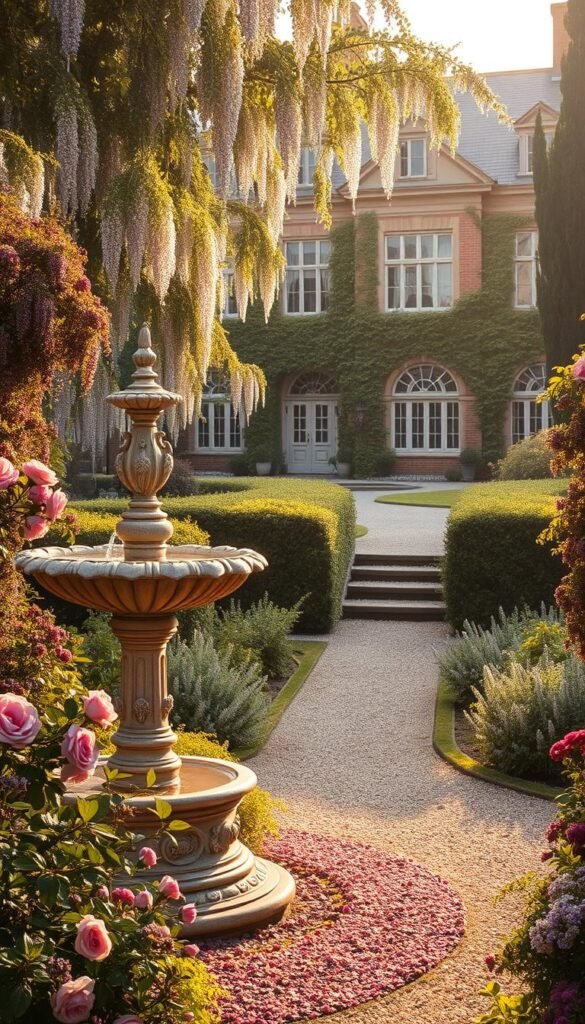
Elegance in outdoor design comes from balancing tradition and innovation. By merging 19th-century craftsmanship with today’s practical needs, your space becomes a living tribute to enduring beauty. This approach celebrates intricate details while ensuring every element serves a purpose.
The Essence of Victorian Elegance
True refinement lies in layered compositions. Structured pathways frame overflowing flower beds, while ornamental accents like weathered urns add focal points. Choose plants with rich histories—heritage roses or antique hydrangeas—to anchor your design in authenticity.
| Design Element | Traditional Material | Modern Alternative |
|---|---|---|
| Edging | Cast Iron | Powder-Coated Steel |
| Seating | Teak Wood | Recycled Composite |
| Planters | Terracotta | Fiberstone |
Blending Old-World Charm with Modern Flair
Update classic concepts without losing their soul. Swap thirsty lawns for native ground covers that mimic lush carpets. Use solar-powered lighting in lantern-style fixtures to maintain ambiance while cutting energy use. For inspiration on mixing vintage and modern elements, focus on color continuity between indoor rooms and outdoor areas.
Introduce subtle contemporary touches through furniture choices. A wrought-iron bistro set gains fresh relevance when paired with concrete pavers in geometric patterns. This fusion creates spaces that feel curated rather than dated—perfect for today’s relaxed entertaining.
Incorporating Wrought Iron Furniture and Classic Elements
Crafting inviting outdoor areas begins with choosing pieces that blend form and function. Wrought iron furniture offers timeless appeal while shaping usable zones in your landscape. These durable pieces create natural gathering spots where design meets comfort.
Styling Spaces with Lasting Character
Position a curved bench beneath climbing roses to frame an intimate seating area. The iron’s sturdy structure contrasts beautifully with soft greenery, inviting quiet moments outdoors. For larger spaces, consider a gazebo with intricate scrollwork—its open design encourages airflow while providing shade.
Mix practicality with artistry by selecting pieces that age gracefully. Cast iron develops a warm patina over time, adding depth to your decor. Place side tables between chairs to hold drinks or potted herbs, merging usefulness with visual charm.
Arrange your iron furniture to guide movement through the space. A pair of chairs near a water feature creates a destination point, while pathways lined with low stools offer casual resting spots. This strategic placement turns ordinary corners into purposeful retreats.

